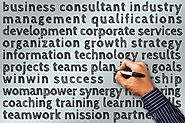-
About
- About Listly
- Community & Support
- Howto
- Chrome Extension
- Bookmarklet
- WordPress Plugin
- Listly Premium
- Privacy
- Terms
- DMCA Copyright
- © 2010-2025 Boomy Labs


Listly by April Rose Casiple Semogan
Technology has come a long way. There was a time when SEO was an unfamiliar term that only a chosen few can understand. Now, every business wants it for their website. Still, SEO is shrouded with mystery for people who work outside the digital marketing team. At least they know that they need it, just not how it's done.
With the right strategy, SEO can help you build your own venue for online success.

Doorway pages are really easy to create in volume. You can use it to target specific keywords and keyword groups. This sounds like a good way to get your rankings up, right? That's what we need, right? Keywords??? WRONG!
SEO experts will tell you to stay away from poor doorway pages. Google penalises websites that use this method to outsmart their algorithm. Although, if your doorway pages contain relevant, clear and unique content-- Google may allow it. Still, it would be safer to stir clear of questionable methods.

Backlinks play an important role in SEO. However, you need to make sure that your backlinks are high-quality. If your backlinks are neutral and low-quality backlinks, then you are doing more harm than good to your website. You should remove and avoid neutral backlinks on your page.
Even if Google does not penalise the usage of neutral backlinks, it is not doing you good anyway. It does not boost your ranking, so you are just wasting time.

You should not delete content pages even if you don't need it. The keywords you used for the content and ranking will also be removed along with the page. This rule also applies to the URL of the page that contains page-specific keywords. What you should do is to keep the page. Just inform your visitors by leaving a message on the page as a guide to the present relevant product or service.

It probably seems like a good idea to use the exact match of a target keyword as an anchor text going to your website. However, this is not the case. Using this method can put your site at risk. An unreasonable amount of exact match keyword anchor texts that link to your website will be penalised by Google.

It's a new age, people! Stop trying to make keyword stuffing happen! It's not going to happen! Keywords stuffing is when you put an excessive amount of keywords on content to the point that it does not make sense anymore.

You need to keep your website fresh to achieve your goal of getting more traffic and earnings. You can start by making small changes as a trial. And when if you see it working, you can apply it to the whole site.

We have established that neutral backlinks are just wasting your time, so time to invest in the good stuff. Make sure that your backlinks are relevant to your niche and that they are of high quality. The volume means nothing if your backlinks are low-quality.

User experience is essential in driving website traffic. This is why it is best if you keep your homepage minimalistic while your content should be valuable and relevant. Your subpages should contain targeted keywords pertinent to your industry. Some experts even suggest shortening your URL.

Of all the SEO do's, this is the riskiest and time-consuming. It involves a lot of time and effort. However, this is a necessary change so that your site updated. Make sure to prioritise user-experience and fast loading speed. Making your website responsive is advantageous if you consider Google's mobile-first index algorithm.

SEO is also about keeping things fresh. You should show both your target audience and the search engines that you are active, relevant and high-quality. You can do this by posting new, high-quality content often.
